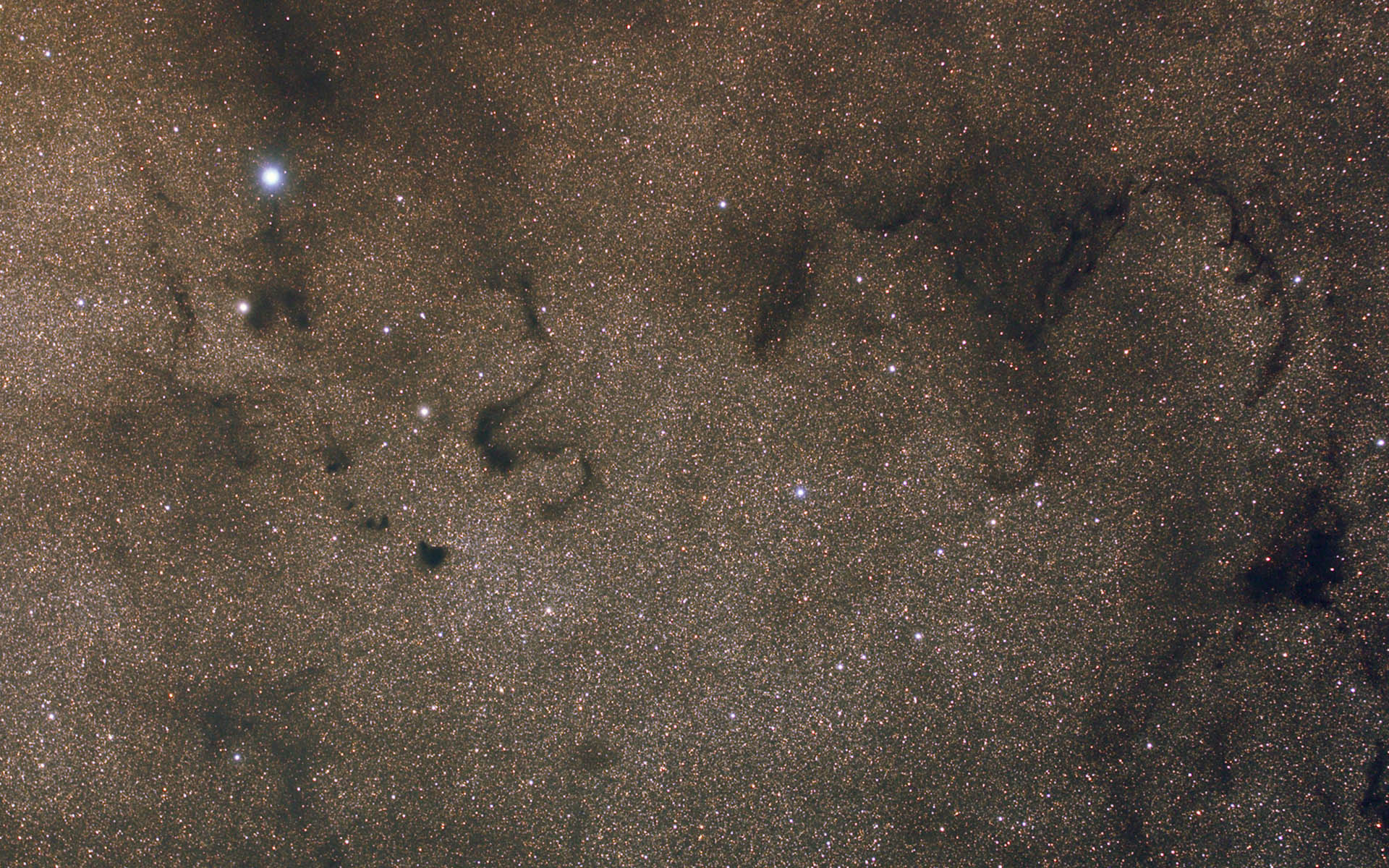

Presented in 1920x1200 HD pixels, this dark nebula image is centered on the Snake Nebula in the constellation Ophiuchus (very near Scorpius and The Pipe Nebula). There are a number of other dark nebulae in the picture. Below & left of the snake is a very dark spot which is B68, with B69, B70, and B74 swinging left and up. (See the article on B68 written by Bill Pellerin of the HAS in the July 2014 Guidestar here.) The bright star is 44 Oph and above that is part of the pipe nebula. To the right of the snake we have B261, which combined with B262 to the right makes a cool looking wing shape. Below, on the right edge is a large dark blotch, B67a (not to be confused with B67, which is in the stem of the pipe.
This image accompanies an article about Taby's Star, the "Most Mysterious Star in the Galaxy" in the June 2017 issue of Sky and Telescope Magazine. The caption reads:
THE DUST BETWEEN Evidence exists for structure within interstellar
dust and gas on every scale that we can measure. This image, centered
on the Snake (Barnard 72) in Ophiuchus, shows dense concentrations of
dust and gas that block out the light from background stars. The Snake
is a few light-years across. The concentrations required to explain the
brightness variations of Tabby’s star would have to be much smaller, less
than 1/10,000 of a light-year.
This is 22*5 = 110 minutes total exposure from the Spring 2011 Davis Mountains trip. Takahashi FSQ-85 Telescope with reducer, AP 900GTO mount, QHY8 CCD Camera. The FSQ-85 is 323mm focal length, f 3.86 per Takahashi specs.
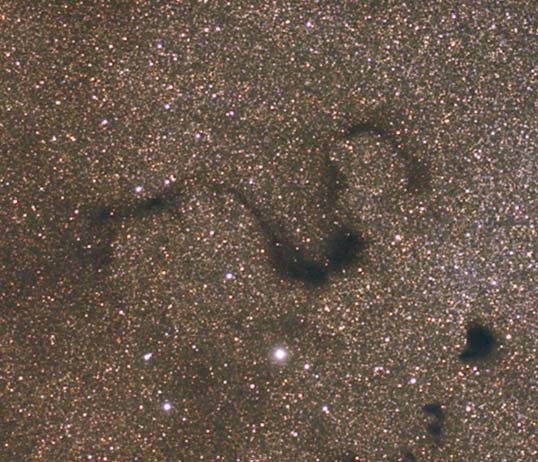
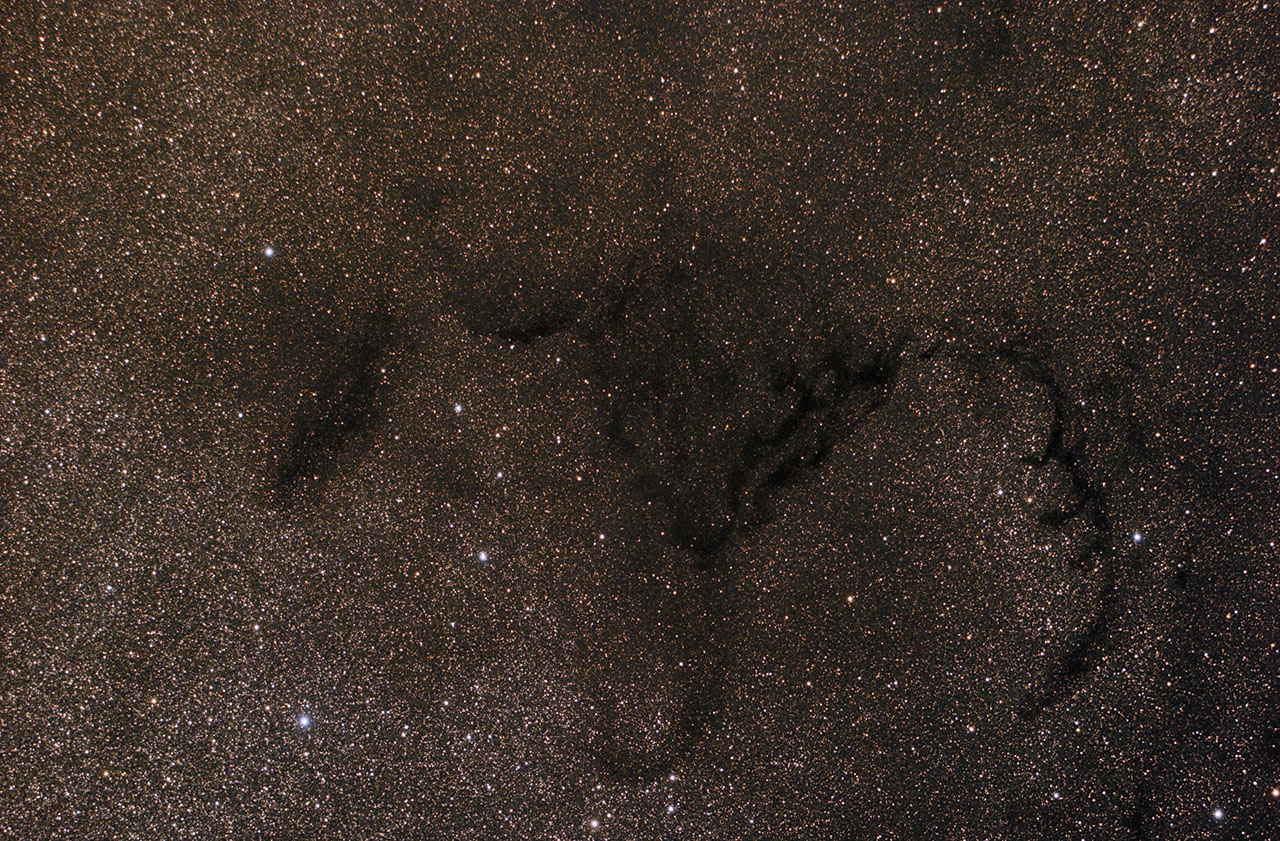
This is a close-up of the area to the right of the Snake Nebula image at the top of the page. It kind of looks like a cross between a bird and a scorpion. It needs a cool name; let me know if you know of one or would like to propose one! I'll call it the "winged scorpion" for now. B261 is the oblong area to the left, the rest is B262. It's unclear to me, but the area on the right must also include B75. Here's another B262 and B75 page (Jim Thommes).
Image details: From the Spring 2014 Davis Mountains trip, the image above consists of 9*5 minutes through the TOA 130 telescope with reducer and QHY8 "color" CCD camera, along with 9*5 minutes through the from the SBIG ST-8300m monochrome camera, luminance filter, and the Takahashi FSQ-85 telescope with reducer (328mm focal length). My equipment rides on the AP 900GTO mount. My processing techniques are discussed here, but on this one I used the monochrome image specifically to reduce the noise in the darker areas. After aligning the two images in Registar, I then used and inverse TOA image as a mask (allowing only the darker areas to come through). By blending in the FSQ image the noise in the dark/low signal areas was significantly reduced.
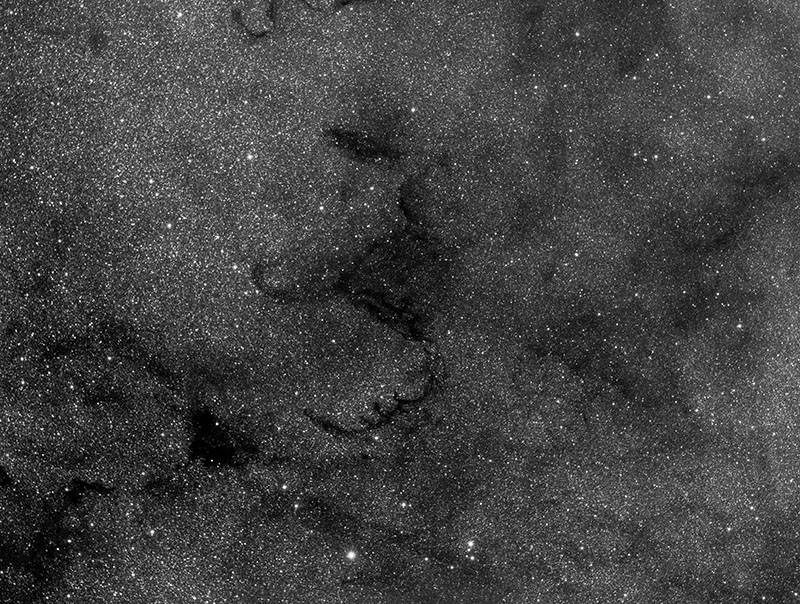
Here's the monochrome image described above. You can see a bit of the Snake Nebula at the top. The dark blotch lower left of the "winged scorpion" is B67a. To the left of that is part of B63.
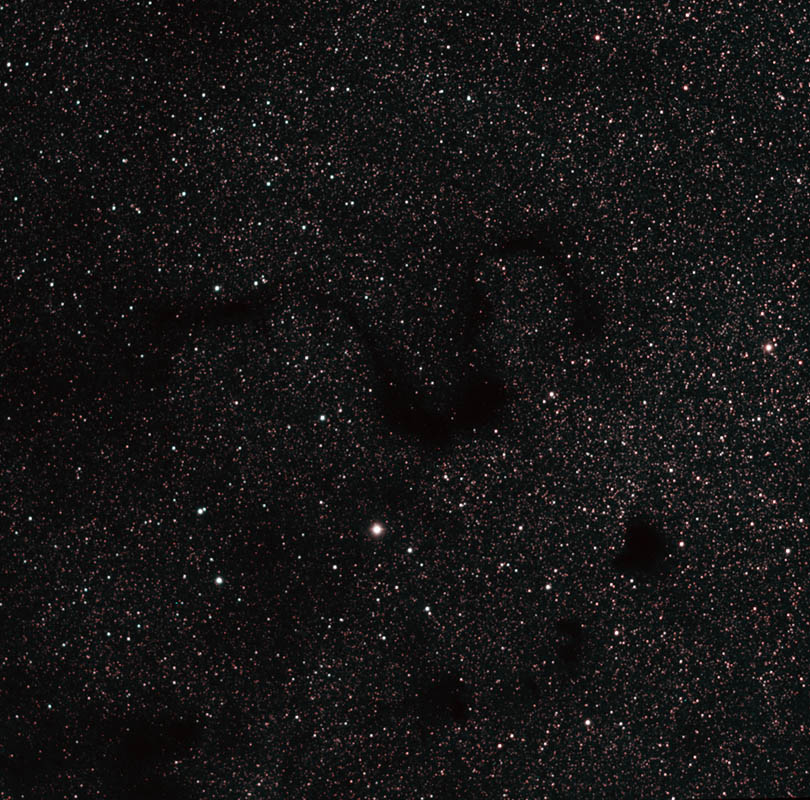
I was planning to shoot this in RGB, but the B didn't get done due to weather conditions. I copied the green channel to blue to get the RGB color image above. 7 G and 7 R binned 2x2.
Dark Nebula Page |
